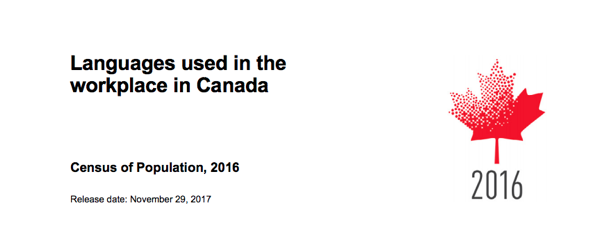The 2016 Census data indicate the importance of international migration in the evolution of Canada’s population. Despite increasing ethnocultural and linguistic diversity within the Canadian population, English and French remain the languages of convergence and integration into Canadian society.
The census collects information on language of work primarily to measure the use of English and French in the workplace in Canada, particularly in Quebec and in areas of contact between the English- and French-speaking populations. This information is also used to study the linguistic integration of immigrants into the labour market and into Canadian society in general.
The data on language of work confirm the importance of Canada’s official languages, English and French, as the languages of communication in the public space. For example, 99.2% of Canadians who were employed between January 1, 2015, and May 7, 2016, reported using English or French at work at least on a regular basis.
The portrait of languages used at work is fairly stable across the country. The proportion of workers who reported using English rose from 85.0% in 2006 to 85.8% in 2016, an increase of 1,538,205 people. Conversely, despite an increase of 277,015 in their numbers, the percentage of workers who used French at least on a regular basis at work fell across the country from 25.7% in 2006 to 25.0% in 2016. Less than 5% of Canadian workers reported using an other language in 2016. This language was not the main language of work for more than half of these workers (2.6%), but was used on a regular basis in addition to English or French. The proportion of workers who use more than one language rose slightly from 14.9% in 2006 to 15.4% in 2016.
Published By: Statistics Canada
Publication Date: November 2017






